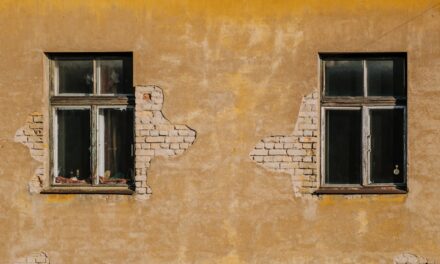Nicolas de Largillière, often referred to simply as Santerre, was born in 1658 in the bustling city of Paris, a hub of artistic and cultural activity during the late 17th century. His early life was marked by the vibrant atmosphere of the French capital, where art and creativity flourished under the reign of Louis
Growing up in a family that appreciated the arts, Santerre was exposed to various artistic influences from a young age. His father, a painter himself, recognised his son’s talent early on and encouraged him to pursue a career in art. This familial support provided Santerre with a solid foundation upon which he would build his artistic career.
Santerre’s formal education began at the Académie Royale de Peinture et de Sculpture, where he honed his skills in painting and developed a keen understanding of classical techniques. The academy was renowned for its rigorous training and emphasis on the study of the human form, perspective, and composition. Under the tutelage of prominent artists, Santerre learned to master the intricacies of oil painting and the subtleties of light and shadow.
His education was not limited to technical skills; he also absorbed the philosophical and aesthetic ideals of the time, which would later inform his unique artistic voice.
Summary
- Santerre was born in Paris in 1651 and received his artistic training at the Académie Royale de Peinture et de Sculpture.
- Influenced by the Baroque and Rococo styles, Santerre’s work is characterized by its delicate brushwork and use of pastel colours.
- His notable works include the ceiling of the Salon de la Princesse at the Hôtel de Soubise and the altarpiece for the Church of Saint-Roch in Paris.
- Santerre’s impact on the art world is evident in his role as a teacher at the Académie Royale and his influence on the next generation of French artists.
- Known for his use of vibrant colours and balanced compositions, Santerre’s work reflects the elegance and opulence of the Rococo movement.
Influences and Style
Santerre’s artistic style was shaped by a myriad of influences, both from his contemporaries and from the rich history of art that preceded him. The Baroque movement, with its dramatic use of light and shadow, played a significant role in shaping his early works. Artists such as Caravaggio and Rembrandt left an indelible mark on Santerre’s approach to chiaroscuro, which he employed to create depth and emotion in his paintings.
However, as he matured as an artist, he began to incorporate elements of the emerging Rococo style, characterised by its playful themes and ornate details. The influence of French Rococo can be seen in Santerre’s use of colour and composition. He embraced a lighter palette, favouring pastel hues that conveyed a sense of elegance and grace.
This shift in style reflected the changing tastes of the French aristocracy, who sought art that was not only visually appealing but also conveyed a sense of leisure and pleasure. Santerre’s ability to blend these influences resulted in a distinctive style that set him apart from his peers, allowing him to carve out a niche within the competitive art scene of 18th-century France.
Notable Works and Commissions
Throughout his career, Santerre produced a remarkable body of work that included portraits, allegorical scenes, and religious subjects. One of his most notable commissions was for the portrait of Louis XIV, which showcased not only the king’s regal bearing but also Santerre’s exceptional skill in capturing likenesses. This particular work solidified his reputation as one of the leading portraitists of his time.
His ability to convey personality through facial expressions and body language became a hallmark of his portraiture. In addition to royal commissions, Santerre also painted numerous works for members of the French aristocracy. His portraits often depicted subjects in elaborate costumes, surrounded by opulent settings that reflected their social status.
These works were not merely representations; they were carefully constructed narratives that conveyed the values and aspirations of the elite class. Santerre’s attention to detail and ability to create a sense of intimacy between the viewer and the subject made his portraits highly sought after.
Santerre’s Impact on the Art World
Santerre’s contributions to the art world extended beyond his individual works; he played a pivotal role in shaping the direction of French painting during a transformative period. His innovative approach to portraiture influenced a generation of artists who followed in his footsteps. By blending elements of realism with the decorative qualities of Rococo, Santerre set a precedent for future portraitists who sought to capture not only likeness but also character and emotion.
Moreover, Santerre’s work contributed to the broader cultural landscape of France during the 18th century. As the Rococo style gained popularity, it became synonymous with the excesses and pleasures of aristocratic life. Santerre’s ability to encapsulate this ethos in his paintings allowed him to resonate with contemporary audiences while also leaving a lasting legacy for future generations.
His influence can be seen in the works of later artists who embraced similar themes and techniques, further solidifying his place in art history.
Exploration of Santerre’s Use of Colour and Composition
One of the defining features of Santerre’s work is his masterful use of colour and composition. He had an innate ability to create harmonious colour palettes that evoked emotion and atmosphere within his paintings. His preference for soft pastels and warm tones contributed to an overall sense of lightness and elegance that became synonymous with Rococo art.
This delicate approach allowed him to convey subtle nuances in mood, enhancing the viewer’s experience. In terms of composition, Santerre often employed dynamic arrangements that drew the viewer’s eye across the canvas. He understood the importance of balance and movement within a painting, using diagonal lines and asymmetrical arrangements to create visual interest.
This technique not only added depth to his works but also encouraged engagement from the audience. By guiding their gaze through carefully orchestrated compositions, Santerre invited viewers to explore every detail, fostering a deeper connection with his art.
Santerre’s Portraiture and Allegorical Works
Santerre’s portraiture is perhaps his most celebrated contribution to art history. His ability to capture the essence of his subjects set him apart from many contemporaries who focused solely on physical likeness. Santerre infused his portraits with personality, often revealing insights into the character and social standing of his sitters through subtle gestures and expressions.
This psychological depth made his portraits not just representations but rather intimate glimpses into the lives of those he painted. In addition to portraiture, Santerre also excelled in creating allegorical works that conveyed moral or philosophical messages. These paintings often featured mythological or historical themes, allowing him to explore complex ideas through visual storytelling.
His allegorical compositions were characterised by their intricate details and vibrant colours, drawing viewers into narratives that transcended mere representation. Through these works, Santerre demonstrated his versatility as an artist while also engaging with broader cultural conversations of his time.
Santerre’s Contribution to the Rococo Movement
As a prominent figure within the Rococo movement, Santerre played a crucial role in defining its aesthetic principles. The Rococo style emerged as a reaction against the grandeur of Baroque art, favouring instead a more playful and intimate approach. Santerre embraced this ethos wholeheartedly, infusing his works with lightness, whimsy, and an emphasis on pleasure.
His paintings often depicted scenes of leisure and romance, reflecting the values and desires of the French aristocracy during this period. Santerre’s contribution to Rococo art extended beyond mere stylistic choices; he also helped elevate portraiture as a significant genre within this movement. By combining elements of realism with decorative qualities, he transformed portrait painting into an art form that celebrated both individuality and social status.
His ability to capture the essence of his subjects while incorporating Rococo aesthetics ensured that his works resonated with contemporary audiences while influencing future generations of artists.
Santerre’s Legacy and Influence on Later Artists
The legacy of Nicolas de Largillière is evident in the works of numerous artists who followed in his footsteps. His innovative approach to portraiture set new standards for representation, inspiring painters such as Jean-Baptiste-Siméon Chardin and Élisabeth Louise Vigée Le Brun. These artists built upon Santerre’s techniques while infusing their own unique perspectives into their work, furthering the evolution of French painting.
Moreover, Santerre’s influence extended beyond France; his style resonated with artists across Europe who sought to capture similar themes of elegance and intimacy in their own work. The impact of his colour palettes and compositional strategies can be traced through various movements that emerged in subsequent centuries, including Romanticism and Impressionism. As such, Santerre’s contributions continue to be felt within the broader narrative of art history.
Examination of Santerre’s Technical Skill and Mastery of Mediums
Santerre’s technical skill was unparalleled during his time; he possessed an exceptional command over oil painting that allowed him to achieve remarkable levels of detail and realism in his works. His ability to manipulate paint with precision enabled him to create lifelike textures—whether it be the softness of fabric or the sheen of skin—demonstrating an acute understanding of materiality. This mastery extended beyond mere representation; it was through his technical prowess that he could evoke emotion and atmosphere within each piece.
In addition to oil painting, Santerre experimented with various mediums throughout his career, showcasing versatility that further distinguished him from contemporaries. He often employed techniques such as glazing—layering thin washes of colour—to achieve luminosity in his paintings. This meticulous approach not only enhanced visual depth but also contributed to the overall richness of his colour palettes.
By mastering multiple mediums, Santerre solidified his reputation as one of France’s foremost painters.
Santerre’s Patronage and Relationships with the French Aristocracy
Santerre’s success as an artist was closely tied to his relationships with members of the French aristocracy who served as both patrons and subjects for his work. His ability to navigate this elite social sphere allowed him access to influential circles where he could showcase his talent while securing lucrative commissions. These relationships were mutually beneficial; aristocrats sought portraits that conveyed their status while Santerre gained recognition through their patronage.
The dynamics between artist and patron were complex; while many artists relied heavily on commissions for financial stability, they also faced pressures regarding artistic freedom. However, Santerre managed to maintain a balance between fulfilling patron expectations while infusing personal expression into his work. This delicate negotiation not only contributed to his success but also allowed him to cultivate lasting relationships within aristocratic circles that would shape both his career trajectory and artistic legacy.
Santerre’s Influence on the Development of French Art
Nicolas de Largillière’s impact on French art cannot be overstated; he played an instrumental role in shaping its trajectory during a pivotal moment in history. By bridging Baroque traditions with emerging Rococo sensibilities, he helped redefine portraiture as an essential genre within French painting—one that celebrated individuality alongside social status. Furthermore, Santerre’s innovative techniques laid groundwork for future movements that would emerge throughout Europe over subsequent centuries—his emphasis on colour harmony influenced Impressionists seeking new ways to capture light while Romantic artists drew inspiration from emotional depth found within his works.
In conclusion, Nicolas de Largillière’s contributions extend far beyond individual masterpieces; they represent a significant chapter within broader narratives surrounding artistic evolution during 18th-century France—one marked by innovation amidst changing cultural landscapes—ensuring that he remains an enduring figure within art history today.
For those interested in exploring the combination of traditional and digital art techniques, there is a fascinating article on Think of Art that delves into this creative process. This article complements the in-depth guide to the artist Jean-Baptiste Santerre by providing insights into how artists can merge different mediums to create unique and innovative artworks. By incorporating traditional sketches with digital enhancements, artists can push the boundaries of their creativity and produce captivating pieces that resonate with viewers.



